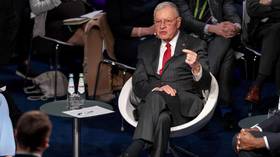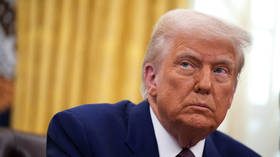Energy News Beat
- Retirement of coal-fired power plants in the West has done nothing to reverse global coal demand.
- Global coal consumption is set to remain at these high levels—or even hit new all-time highs—for a few more years.
- Global operating coal power capacity has increased by 13% since 2015, data from Global Energy Monitor shows.
Developed economies have been reducing their use of coal in recent years, but the world isn’t ready to kick its coal addiction, not yet. Developing markets in Asia are boosting their coal-fired power generation to meet surging electricity demand.
Despite continued retirements of coal-fired power in the U.S., lower coal demand in Europe, and the end of the 142-year coal electricity in the UK, global coal demand hit another record high last year. And consumption is set to remain at these high levels—or even hit new all-time highs—for a few more years.
Emerging Asian economies, led by China and India, have been sustaining global coal demand growth this decade. They plan additional coal-fired capacity to support their respective renewables booms with 24/7 baseload power and avoid power crunches or blackouts like the ones they suffered in the early 2020s.
Global Coal Demand At Record High
Global operating coal power capacity has increased by 13% since 2015, data from Global Energy Monitor (GEM) shows. Since 2015, when the countries reached a deal on the Paris Agreement to limit global warming to 1.5 degrees Celsius, the world has added 259 GW of operating coal power capacity. As of the end of 2024, total operating coal power capacity hit a record high of 2,175 gigawatts (GW), while another 611 GW of capacity was under development, according to GEM’s Global Coal Plant Tracker.

Global coal demand surged to another record high in 2024, the International Energy Agency (IEA) said in December, expecting the world’s coal consumption to level off through 2027.
The previous record was from a year earlier. In 2023, demand hit the then-record, and the IEA then predicted flat consumption in 2024. They were wrong—demand increased last year, their own analysis showed.
Despite forecasts of plateauing, global coal consumption could continue to rise this year and the next few years, too, depending on how China’s economy and energy security policies evolve in the coming months.
A plateau in global coal demand will largely depend on China, the IEA noted in December.
“Weather factors – particularly in China, the world’s largest coal consumer – will have a major impact on short-term trends for coal demand. The speed at which electricity demand grows will also be very important over the medium term,” said IEA Director of Energy Markets and Security Keisuke Sadamori.
Electricity demand globally is set to jump in the coming years with AI advancements and data center investments.
Growth in power demand in 2024 and 2025 is forecast to be among the highest levels in the past two decades, the IEA said in the middle of 2024.
The surge in electricity consumption could slow coal retirements in developed economies and further raise coal demand in emerging markets in Asia, especially if the growth in renewable energy capacity is not enough to meet the rise in power demand.
Two Worlds of Coal Consumption
While solar power will continue to drive the growth of U.S. power generation over the next two years, coal power output will remain unchanged at around 640 billion kilowatt hours (kWh) in 2025 and 2026, the Energy Information Administration (EIA) said last month. America’s coal electricity generation was 647 billion kWh in 2024.
U.S. coal retirements are set to accelerate this year, removing 6%, or 11 GW, of coal-generating capacity from the U.S. electricity sector. Another 2%, or 4 GW, of coal capacity would be removed in 2026, the EIA forecasts. Last year, coal retirements represented about 3 GW of electric power capacity removed from the power system, which was the lowest annual amount of coal capacity retired since 2011.
Across the Atlantic, last year saw a monumental moment in Britain’s electricity system with the switching-off of the last remaining coal power plant in the country. The plant at Ratcliffe-on-Soar was shut at the end of September, ending 142 years of coal-fired electricity generation in the UK and making Britain the first G7 country to phase out coal.
In the European Union, solar power overtook coal generation in 2024, with solar accounting for 11% of EU electricity and coal falling below 10% for the first time ever, data from clean energy think tank Ember showed.
But in China and India, the world’s biggest and second-biggest coal users, respectively, coal is still king despite the surge in renewable power installations.
China’s thermal power generation, which is overwhelmingly dominated by coal, rose by 1.5% in 2024 from a year earlier to a record high of 6.34 trillion kWh, as coal consumption in the electricity sector continues to grow, and so are China’s production and imports.
This year, China’s coal demand and production are expected to continue rising, and the fuel is set to remain the backbone of the country’s energy system, according to China Coal Transportation and Distribution Association.
In India, coal use is also rising — demand increased in 2024 by more than 5% to hit 1.3 billion tons—a level that only China has reached previously, per IEA data.
India has reduced coal imports, but that’s only because it aims to hike domestic output to source more coal at home. With industry expected to expand and power demand to soar, India is set to use more of its lower-quality domestic coal to meet its consumption needs.
By Tsvetana Paraskova for Oilprice.com
The post The End of Coal Is Nowhere In Sight appeared first on Energy News Beat.















